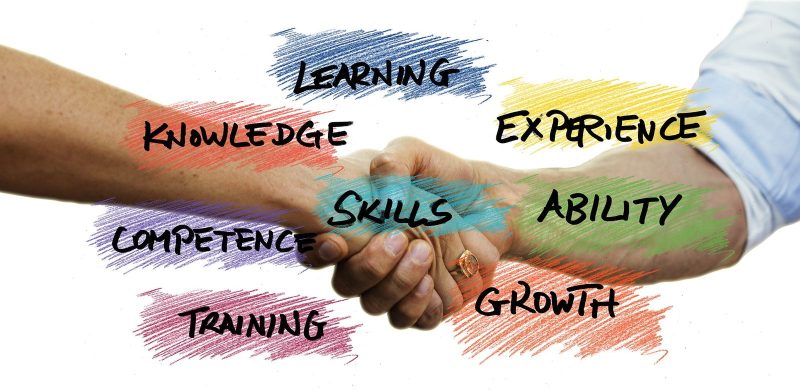Every company has its own set of rules, working style, objectives and required skill set. They hire candidates that match most of the criteria required to fill in the position with the help of HRMS. However, the candidates that join the organisation are never perfect and have something or the other to learn and grasp. Therefore, organisations must provide them with training.
Training helps the candidates get the missing skill set, and understand a lot about the company and the work. This turns them into beneficial assets for the organisation. In this article, we will read about the benefits of training and its importance in the workplace.
What is employee Training and Development
Companies hire skilled and qualified candidates to fill up their vacant roles. However, they need to put in some effort to ensure that the candidates are well-versed with the company culture. This makes them updated to meet the demands and skill-set required by the company and the specific role.
The process of enhancing the technical skills of the employees required by the job is known as employee training. It helps improve the knowledge and skills of the employee for a specific job and task. It is generally a short-term process which goes on for about 1-3 months and offers immediate results. It is like an investment that the company makes in the employees so that they can get the desired results.
Employee development is the process which enhances the soft skills of the employee and their personality through multiple training types. It focuses on skills such as communication, leadership skills, teamworking, attitude, etc. This is a basic yet effective training helpful to the employee in every sphere of life, and in their career. It facilitates continuous growth and organisational success.
Employee training and development is generally a planned curriculum as a part of the HRMS that the company follows with each of their new hires, to ensure they blend perfectly into the organisational culture and environment. Here, the trainers impart knowledge about the values and goals of the organisation to the employees and get knowledge about their future aspirations in return.
Reasons for Employee Training in HRMS
Training helps employees become more effective in the workplace by improving their job skills and enhancing their knowledge base. The ROI on the training process is quite high for the organisations. They become more productive and can comply with the goals and requirements of the organisation. Reasons why employers initiate training programs through HRMS software for their employees, are-
- To Help Them Improve Skills and Knowledge
Employee training programs assist the employees in improving their skill set to match the requirements with the changing scenarios. These improvements have a positive effect on the workers’ productivity and professional development and help them enhance the efficiency of the organisation. In the training, the employees learn work ethics, human relations and safety measures, which facilitates their overall development.
- To Satisfy the Requirements for Appraisals
With training, the employees can acquire the skills and professional development required for career advancement and career growth. They can be prepared and ready for appraisals and have the skills required for changing roles and increasing responsibilities. The training programs help the employees adopt the skills needed to function effectively in the new position, which might include leadership skills or skills pertaining to special software.
- To Improve Technical Skills
Sometimes, the training focuses on improving the technical skills of an individual. This might be regarding the software and technologies the company uses, or skills relating to graphs, spreadsheets, databases, software systems, etc., so that they can perform efficiently in their workplace.
- To Launch a New Performance Management System
Often, companies launch a new system of performance management, and to test their efficiency and effectiveness, they conduct training. Here, the HR and the managers develop performance expectations in front of the employees. This helps them understand what is expected, and meet the organisational goals.
Benefits of training in HRMS
Employee training programs benefit both the employees and the organisation in the short and long run. The training is the most fruitful when the employees take up dedicated and consistent training. Some benefits of the training program include-
- Increased Productivity
The performance and productivity levels and employee engagement increase significantly after training. By getting adequate skills and knowledge, they can build more confidence in their abilities, improving overall performance and employee retention.
- Uniformity
Training helps standardise the work process among the staff. This brings all the employees on the same scale and helps them work in flow. They apply similar procedures, learned in the same job training, which promotes uniformity of work processes and better results.
- Reduced Wastage of Resources
Trained employees to use the resources of the organisation judiciously. They make good, safe and economical use of the materials, tools and equipment of the company. This minimises the scope for accidents, damages and wastage of resources.
- Lesser Need for Supervision
After training, the employees become well-versed with the company workflow and thus do not require constant help from the seniors. This lessens the need for supervision in the workplace.
- Better Chances of Promotion
With constant training and leadership development programs, managers can ensure that the employees are up to date. Also, they can be upskilled with time. After acquiring significant experience when the time comes, they can be promoted to higher job roles within the company.
This eliminates the need of hiring experienced employees from the market for the organisation, improves the promotion rates from within and saves a lot of time and cost.
- Improved Organisational Structure
The organisational structure of a company improves when they have an organised system of training for the employees. With continuous learning, the knowledge of employees increases through consistent training systematically, by trial and error and making improvements, wherever necessary.
- Higher Staff Morale
Employees feel valued, and an inevitable part of the organisation, when they take up training programs regularly. The companies acknowledge their contribution to the organisation, which makes them feel appreciated. This helps in boosting the staff morale, who can then conduct their duties with more self-confidence and loyalty.
- Better Customer Relations
The clientele of the organisation is more attracted if they have experienced and skilled employees and HRMS. With training, you can ensure that your employees are more professional and productive. Consequently, the customer service quality also improves, making the clients more satisfied with the organisation.
- Better Understanding of Goals
To work in synchronisation, it is vital that the business goals and the employee career goals are aligned. With the proper knowledge of the policies of the goals and knowledge of the organisation, the employees can serve the organisation better. This can be achieved through job training, They can understand the ethics, values, policies, vision and objectives of the organisation and workplace expectations, and work according to them.
- Inclusive Workplace Environment
Consistent training for employees helps them become more effective and productive, which adds up to the workplace environment. It facilitates an atmosphere, sometimes through online learning, that encourages the employees to feel valued and welcomed and improves employee engagement. A good work environment is essential for the growth and development of the motivated employees and the overall growth of the organisation.
- Utilisation of Updated Technology
Whenever a company starts using updated technology, they hold job training to ensure that all the employees get a hold of it. With the rapidly increasing usage of technology across all sectors, teaching the employees usage of new technology helps them become experienced employees and increases levels of efficiency in the organisation.
- Performance of General Safety Procedures
An employee can work with safety and precautions only after getting adequate training. It can be related to physical safety, which involves dealing with heavy and harmful equipment, or online safety, which is related to online threats such as hacking, data loss, etc.,
In the training, the organisation prepares the candidates with the potential risks and risk factors in the organisation, and how they can mitigate them.
An employee who is not well-versed in the issues can never prevent such problems and might end up causing great trouble for the organisation. Therefore, training is compulsory to ensure that the employees work in the office safely, and maintain a safe and secure environment.
Guidance in the workplace
Offering guidance regarding the code of conduct and standard operating procedures is an essential part of the training of the employees- whether new or old. The SOPs might change over time and thus, it is important for managers to ensure that the employees work in compliance with them.
Keeping in mind the health scenario the world has faced in the past few years, the code of conduct and the style of training has changed drastically. Several new issues have gained significance. To create a training and guidance plan for the employees and enhance the employee retention rate, the organisations must follow the workflow mentioned below-
- Define the organisational goals and objectives carefully.
- Set the right expectations for the employees and communicate with them.
- Recognise the gaps in the existing training and guidance processes.
- Evaluate the impact of training and guidance on the business.
- Choose the latest training methods that will yield the highest results.
- Constantly measure the results of the training and guidance effort, and improve the processes accordingly.
- Provide continuous support and guidance to the employees and acquire their feedback now and then.
Conclusion
To conclude, we can say that effective job training is the first step of an organisation and its HRMS towards furnishing its workforce with the required skill set for amazing employee performance.
The employees need a few years of experience to become perfect and the most productive versions of themselves. However, with good training, they can kick start their process of becoming assets to the organisation. Thus, organisations must carefully plan out the training program with an HRMS software and help employees learn a lot from the programs.
FAQs
1. What is the best type of employee training?
The best employee training is the one which covers the soft skills for the overall development of an individual along with the technical skills and other skills necessary for the job role.
2. Why do employees require training?
With training, the employees can understand their roles and responsibilities and acquire the required skill-set for the job.
3. How can you improve your training process?
You must constantly upgrade your training process by changing with the changing needs of the organisation and the employees.
4. What are the different training methods?
There are a number of training methods such as instructor-led training, on-the-job training, eLearning, Coaching, interactive training, etc.








